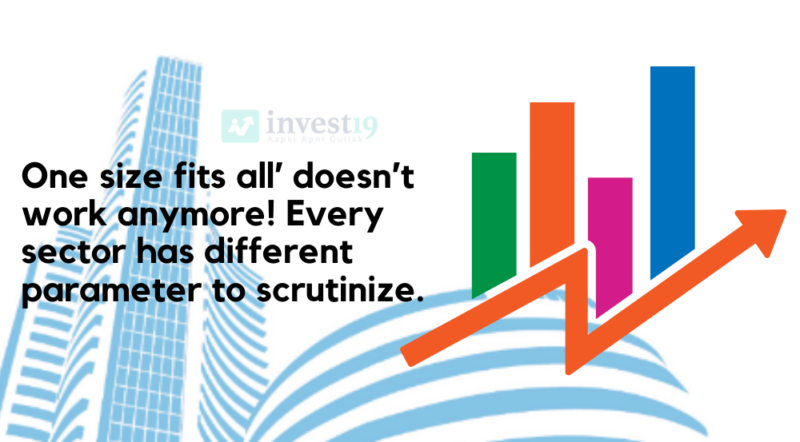No matter you are a newbie to the market or an experienced bargain hunter with the understanding of market situation. One always look for Price-Earnings multiple, Returns on equity and capital employed and capital-mix in order to determine the current valuation of a stock or its projected targets. Various researchers have claimed that P/E ratio is a major parameter to recognize whether a stock is overvalued or undervalued. Any P/E ratio of a stock near 10-20x levels was considered a scenario of undervaluation while over 30x P/E multiple used to resemble a stock an expensive one. Moreover, low P/E multiple in collaboration with decent returns on equity of a stock was considered a proper fit for portfolio. As equity markets have been progressed orthodox valuation parameters are no longer reliable to determine the current and future projections of a stock.
Various industries are trading at more than 100x P/E multiples and street is still ‘gung ho’ over that sector. There are some businesses such as EVs and renewables which are not reporting any profits but working on strong future plans are trading at lavish premiums. Industries working on an asset light model are no longer worried about their rich valuations. Companies with strong corporate governance and compliance with ESG parameters have been re-rated and have been classified under a single basket despite different direct operations. Therefore, every sector reserves a different parameter to analyze stocks under it.
Must Read: Dodla Dairy Will Hit The Primary Market On June 16. Should You Subscribe?
Different sector Different parameter
- Banking Sector on Capital Adequacy Ratio: The direct operations of banking industry are accepting deposits and advancing loans. In order to advance loans, banks rely upon deposits from customers and term deposits from other institutions. So banks have very high debt on their balance sheet and consideration of the same in the form of debt-equity ratio to gauge value is not fit and proper. In order to determine the credibility of the banks, Capital Adequacy Ratio solves the valuation puzzle. The Basel committee norms have stated that the bank’s capital (Tier1 +Tier2)/Risk-Weighted Assets should be around 8%. Tier1 is Equity capital; Tier2 comprises unaudited retained earnings and unaudited reserves while Risk- As high as the Capital Adequacy ratio is maintained by the banks, their chances of insolvency get reduced and their potential to counter the potential losses get increased.
- FMCG Sector on Cash Conversion Cycle: Majority of the FMCG stocks are debt-free and possess rich valuations due to consistent growth, cash-rich advantage and strong branding which restricts small players to enter in the red ocean. Moreover, large FMCG companies have bargaining power over suppliers due to which they don’t face much problem in case the prices of raw material shoot up. Therefore, we are left with a few parameters to do a scrutiny of all FMCG companies. Out of a few parameters, there is Conversion cycle which is calculated by: Inventory Outstanding Days + Days of Sales Outstanding -Days of Payables Outstanding. Lower cash conversion cycle states that the company will less rely upon long term borrowing for working capital which is very healthy for the balance sheet. In order to get more days for payables outstanding the company must have strong brand image in the market.
- IT Sector on Average Revenue per Employee: Technology stocks basically work on asset light model. The IT companies are generally cash-rich due to which distribute high dividends and issues buybacks. Majorly, Indian IT companies are service-providers to other countries which is why they maintain high level corporate governance which makes them more reliable.So a scrutiny of the IT sector restricts us from considering balance sheet, corporate governance and reserves availability. IT companies are highest salary deploying companies to their employees as their operations rely upon technical know-how of the talents recruited. Major portion of their operating expenses is diverted as a salary to their employees. Therefore, average revenue employees generate for an IT company commands major importance. Higher average revenue per employee of an IT company determines the operational efficiency those companies command higher premiums.
- Insurance companies on Cost to Income Ratio: One of the most exciting themes that markets punters are betting upon for next decade considering the potential and rising population of the Indian economy. Insurance companies receive revenue from new premium, annual renewal premium and single premium. The operating expenses of an insurance company are majorly allocated to commission paid to their employees who fetch business. Therefore, understanding the operation efficiency of an insurance business through Cost to Income approach reflects the true potential. Cost to Income is calculated by Total commissions paid to employees in consideration with total premiums received. Lower cost to income ratio determines that an insurance company is operating with higher efficiency.
Also Read: KIMS Hospitals Will Hit The Primary Market On June 16. Should You Subscribe?
